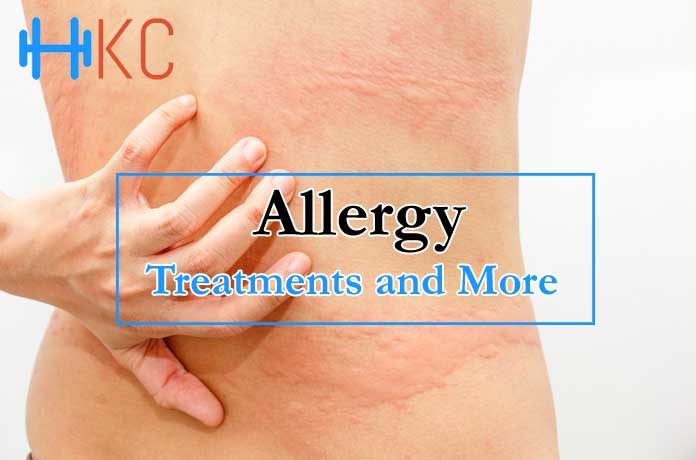When treating allergies, many of us do not know where to begin. The idea of treating your issue is usually the main goal but the idea of having to get shots veers you away. There are now alternatives to shots which make the fight against reactions and seasonal difficulties.
Sublingual drops are a substitution to shots that many are leaning more towards because it has the same effect without the unwanted pain. Traditional allergen shots are a proven therapy in treating instances of allergic rhinitis, allergic conjunctivitis, allergic asthma, and venom allergy since medicine has evolved. Treatment shots have been FDA-approved for a while now and need to be given in a physician’s office. This is due to the high risk and severity of the side effects that may occur. This is why many people see it as an inconvenience because they have to take the time to go get the treatment.
Treatment drops are more desirable because there are many people who cannot receive shots due to physical or personal reasons. It has also been seen to be a better treatment for asthma symptoms which are common issues that many people deal with.
Sublingual Drops (Sublingual Immunotherapy)
Sublingual drops, also known as Sublingual immunotherapy is a form of immunotherapy that allows you to put allergen drops under the tongue. It has been very popular in European countries and has now gained exposure here in the United States. It is always a concern about whether or not the FDA has approved these alternatives. While most allergen drops are not approved, there are certain everyday treatments that are. This also does not mean that what your doctor is giving you is illegal.
Some doctors are able to access the “off-label” prescriptions which are totally acceptable. The only downside to this is that insurance companies will not tend to cover products that are not directly certified by the Food and Drug Administration. Many forms of the drops are being tested and waiting on approval of the FDA. This form of treatment is so fairly new within the United States that it will take some time before every allergen drop is released for consumption.
How to take Sublingual Drops
Many like to take sublingual drops more than getting shots because it is also very convenient. The treatment comes in the form of a drop or a tablet that is placed under the tongue. The substances are then either swallowed or spat out. It has been seen that the immunotherapy work a lot better when it is swallowed. This way has also been seen to causes too many side effects dealing with the gastrointestinal system. It is also best to discuss which way will be most effective for your body with your primary care physician. The immunotherapy is completed every day or on a set schedule for years at a time. It is very easy to take and can be done in the comfort of your own home.
After the drops are taken, the immune system takes in the substances and allows the allergen to pass through. When swallowed, the allergen is accepted as a food and the body does not react to block the foreign substance. This allows the body to have fewer allergy symptoms due to the fact that the allergen has exposed the body to the source.
Consensus on Sublingual Immunotherapy
Sublingual Immunotherapy has been seen to be very effective in treating cases of allergic rhinitis, allergic conjunctivitis, as well as allergic asthma. Although this is the case, the drops effectiveness across the board vary. Once everyone receives the same level of turnaround time after treatment, the drop form will have a better chance of being approved by the FDA. IN research, the results are variable because they show no significant difference in comparison with that of the placebo.
Overall, the treatment is very safe. There have not been any fatal reactions and the side effects are mild. If you choose to take the drops you may experience oral irritations, swelling or itching of the eyes, and nausea. These may seem extreme but are common as the body finds ways to show that it has received the treatment. If the chances of side effects are high it is possible to have in-clinic follow-ups to watch how your body will respond to the treatment.
Conclusion
You may be referred to this treatment following your testing if you are shown to suffer from allergic diseases including:
- allergic rhinitis
- allergic conjunctivitis
- allergic asthma
Sublingual Immunotherapy is also beneficial to children and the elderly. It is the fastest way to combat allergies and helps their bodies as well. Pregnant women can also receive treatment but should never start the treatment while pregnant. This protects the mom and the baby from any complications that the side effects may cause.
If you have severe asthma and would like to use the drops as a treatment you have to be closely monitored. This is due to the fact that your asthma symptoms may worsen following treatment. The most important thing to remember is that allergy drops focus on one particular issue. These are usually common allergies like grass, pollen or dust.
If you suffer from a range of allergies, drops may not be as effective due to the nature of the treatment. It is always best to take to your primary care physician about which treatments would work best for you.
About Dr. Ran Y. Rubinstein
If you are in need of a professional allergist, look no further than Dr. Ran Y. Rubinstein, founder of the Hudson Valley Sinus Center located in New York. Dr. Rubinstein is a board-certified specialist with years of experience in many procedures including sinuplasties and more. Please visit Dr. Rubinstein’s site for more information.
















